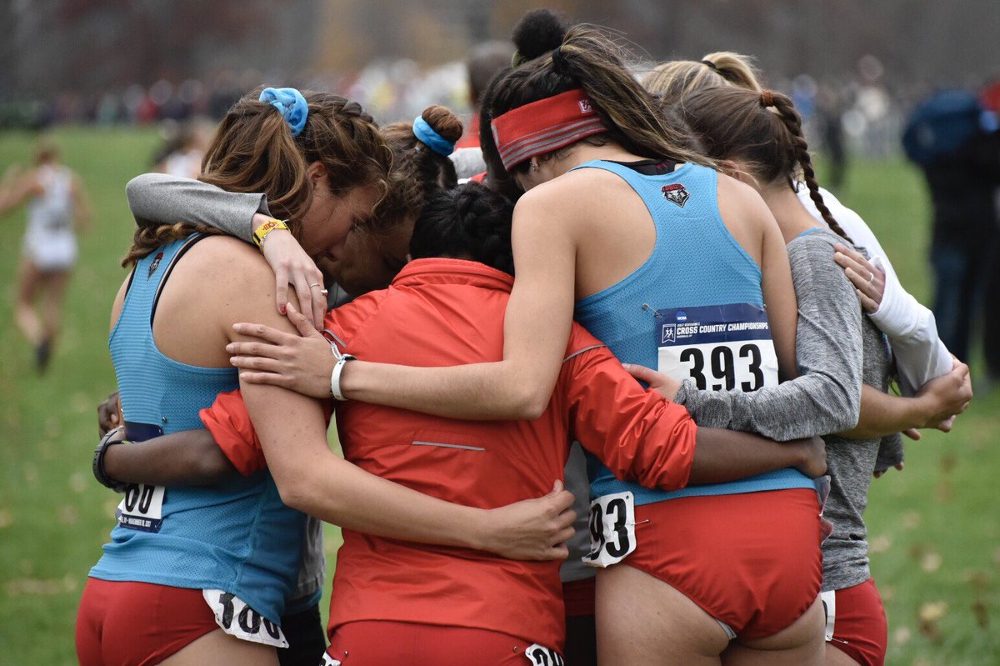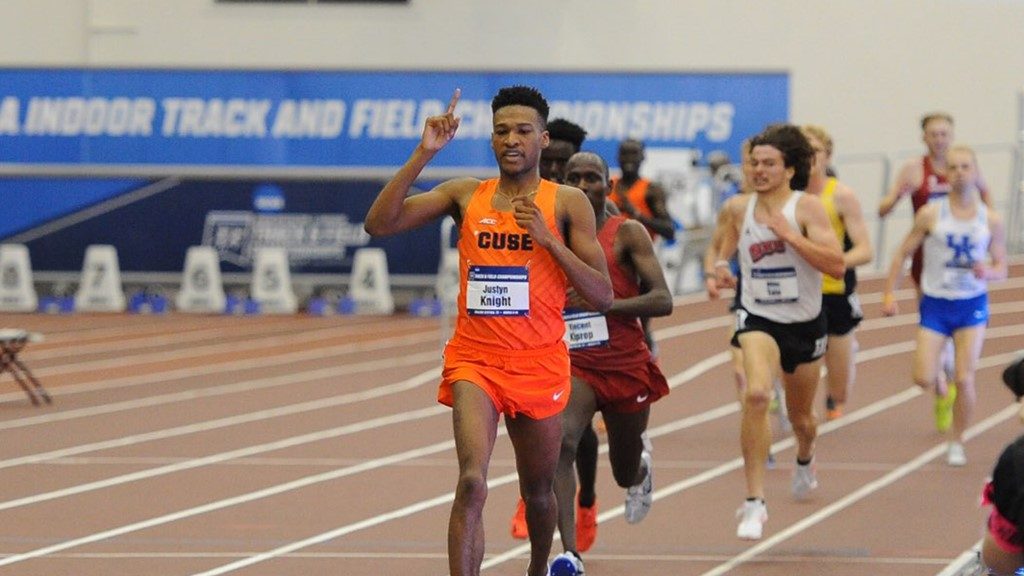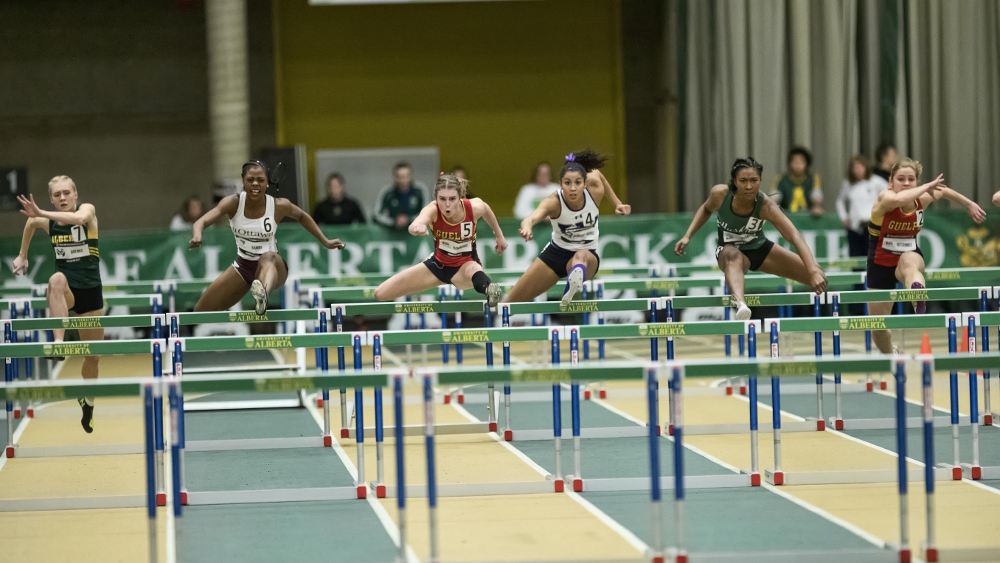Is varsity running becoming extinct?
Some NCAA schools are axing their men's running programs—will this happen in Canada, too?

In the past month several NCAA programs have scrapped their varsity track and cross-country programs. The biggest names to do so are the University of Akron and Brown University, which is in Providence, R.I. While Akron isn’t as well known as its Ivy League counterpart, it has produced some great runners — most notably, 800m Olympic medallist Clayton Murphy.
With most universities anticipating massive budget cuts due to COVID-19, athletic departments are taking a hit. However, this financial hit isn’t affecting all runners in the same way. Both Akron and Brown only cut their men’s running programs, leaving the women’s in place. Another important consideration is the accessibility and diversity of track and field, a sport that has the highest participation rate for high school women and second-highest for high school men in America. Here are the universities’ justifications for the cuts and a look at possible Canadian implications.
RELATED: Galen Rupp announces new coach

RELATED: Will there be a fall 2020 cross-country season?
What is Title IX?
Brown University cited Title IX as a main reason for transitioning men’s cross-country and track to club sports. Title IX is an NCAA policy that ensures equal opportunity for both male and female athletes, proportionate to enrolment. The policy states, “No person in the United States shall, on the basis of sex, be excluded from participation in, be denied the benefits of or be subjected to discrimination under any education program or activity receiving Federal financial assistance.”
This means that across the entire athletics department (meaning all sports) there has to be equal opportunity for men and women to compete, which includes an equal amount of scholarship money. A sport like football, for example, draws lots of money out of the men’s scholarship pool. Without a football team (or a team of equivalent roster size) in the women’s sports, their track and field athletes reap those rewards, but the men’s running programs can suffer.

What about diversity and accessibility?
Russell Dinkins, a former Princeton runner, pointed out in an open letter to Brown University, “Brown is cutting one of its few truly diverse sports while still keeping many of its affluent sports on the table. Brown’s track team has more black males than their lacrosse, baseball, ice hockey and crew teams combined. Some of those teams do not have a single black student on their rosters. Track has 11 .” By cutting one of the most accessible and diverse sports on Brown’s campus, Dinkins illuminates the lost opportunity for black runners to attend their Ivy League institution.
Below are three documents that contains actual numbers and evidence further supporting our fight to save Akron Men’s Cross Country. The documents support three factors: Budget, Title IX and the Importance of XC to Track & Field. pic.twitter.com/yyOMa2htNK
— Clayton Murphy (@Clayton_Murph) May 27, 2020
What about schools that only cut cross-country?
While Brown cut its entire men’s running program, Akron only axed cross-country. However, as Murphy points out, cross-country builds the middle and long distance programs on the track. Few runners hoping to excel at the 1,500m or above would attend a school without a cross-country program. Removing cross-country will make the program a tough sell for incoming distance runners.
Will this happen in Canada?
In May, St. Francis Xavier cut its field events. The university’s decision was due to inadequate facilities and coaching staff for those events. Steve LeBlanc is the Director of High Performance for Athletics New Brunswick and the head track and cross-country coach at the University of Moncton. LeBlanc says this will be a big hit for the AUS.
“This league has seen 10 years of consistent growth and this is the first backward move in a decade,” he says. “It isn’t great, but it seems like the university was in a tight spot.”
While LeBlanc says he is sorry for the loss of half of the St. FX track team, he doesn’t believe that this is a reflection of the situation in the NCAA.
“It came as quite a shock that American schools were cutting programs. I think it’s fair to say that in Canada, we’re working with an extremely different model than in the NCAA. In Canada we don’t have Title IX and we also aren’t dealing with as much money. We’re talking about entirely different systems with different pressures. There remains lots of uncertainly about Canadian athletics due to COVID-19, but I haven’t heard any word of cutting varsity teams.”

Beth Ali, Athletic Director at the University of Toronto, echoes LeBlanc’s statement. “While the current COVID environment is difficult, we believe that it is temporary and we look forward returning to “normal” operations in the future. Currently, there no plans to make changes to our sport offerings within the intercollegiate program.”

When will runners know the fate of their fall 2020 season?
LeBlanc says everything is changing on an hourly basis, but he remains optimistic. “We’re a little far out to make the decision one way or another, but I’m still telling athletes to prepare like they will be.”
He also suggests that there could be regional differences, depending on how an area is managing the virus. “A national competition feels far away right now. This is all new territory, and frankly, I have no clue when they’ll make the call. The hope is that [U Sports] will hang on for as long as they can.”


